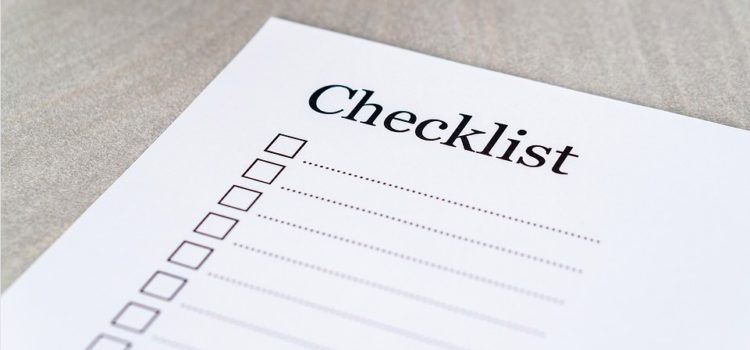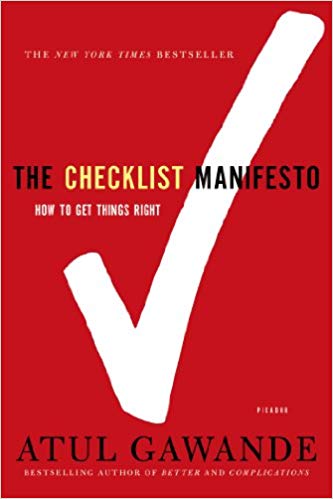

This article is an excerpt from the Shortform summary of "The Checklist Manifesto" by Atul Gawande. Shortform has the world's best summaries of books you should be reading.
Like this article? Sign up for a free trial here .
While it should be simple to use, developing an effective checklist isn’t a simple task. It requires analysis, real-world testing, and revision. You may wonder how to make a checklist that’s effective.
We’ll cover strategies for how to make a checklist from a flight desk designer for Boeing. We’ll also look at why checklists are so effective and provide a checklist for your checklist, so you can make the most effective checklist possible.
Creating an Effective Checklist
Daniel Boorman, flight desk designer for Boeing, is an expert at developing checklists. He’s analyzed thousands of crashes and mishaps in an effort to figure out how to make a checklist that prevents human errors.
Boorman’s checklists for Boeing aircraft fill a thick spiral-bound handbook with tabs. Yet each checklist is brief, consisting of a few lines on a page in large, easy-to-read type. Each applies to a different situation; together they encompass a range of scenarios. At the beginning of the notebook are what pilots call “normal” checklists for routine operations — for instance, steps to take before starting the engines. They’re followed by “non-normal” checklists for emergency situations such as engine failure, smoke in the cockpit, or an insecure door.
Over two decades, Boorman has learned how to make a checklist that works. There are key differences between bad and good checklists.
Bad checklists are:
- Unclear and imprecise.
- Too long, impractical, and difficult to use.
- Created by pencil pushers who lack experience doing what their checklists dictate.
- Overly detailed. They try to spell out every single step, as if the users are clueless.
- Mind-numbing, rather than engaging.
Good checklists:
- Are precise, efficient, concise, practical, and easy to use even in the most difficult circumstances.
- Don’t try to spell out everything. They provide reminders of only the most important steps that even an experienced professional could miss.
How to Make a Checklist: Steps 1 & 2
Before figuring out how to make a checklist, decide two things:
1) Define a clear ‘“pause point” at which the checklist is to be used (unless the moment is obvious, such as when something malfunctions).
2) Decide whether to create a Do-Confirm list or a Read-Do list.
To use a Do-Confirm checklist, team members perform their jobs from memory. Then they stop and go through the checklist and confirm that they completed every item on the checklist. In contrast, to use a Read-Do checklist, people carry out each task as they check it off, like a recipe.
(Shortform note: Choose the type of checklist that makes the most sense for the situation. For instance, a Read-Do list could be used when the sequence needs to be exact or the entire effort will fail, like in operating machinery or listing emergency tasks. A Do-Confirm list gives more freedom and is allowable when the stakes are lower, and a forgotten step can be done later out of sequence. Choosing the right checklist is key is learning how to create a checklist.)
Once you’ve chosen which type of checklist you’re creating, follow these guidelines. This is how to make a checklist:
- Keep the checklist short, typically five to nine items, which is the limit of short-term memory. After 60 to 90 seconds, a checklist becomes a distraction from other things. People are likely to skip or miss steps.
- Focus on the “killer” items or steps that are most dangerous to miss but that are still sometimes overlooked.
- Remember that checklists are not supposed to be how-to guides. They are quick, simple tools to aid the recall of experts.
- Keep wording simple and exact.
- Use language and terminology familiar to the user.
- Fit the checklist on one page.
- Avoid clutter and unnecessary or distracting colors.
- Use upper and lowercase text in a sans serif font for ease of reading.
Test your checklist in the real world — have people use it and provide feedback. Boorman tests his checklists in a flight simulator. Language that you think is clear may not be to someone else. In practice, things are always more complicated than anticipated. Keep revisiting and testing the checklist until it works consistently. This is how to create a checklist.
A Checklist for How to Make a Checklist: Steps 3, 4, & 5
Creating a checklist involves three phases, each with key steps, including the following.
Development
Establish clear, concise objectives. Each task you include should be:
- A critical safety step that is easily missed.
- A step not covered by other means.
- Actionable, requiring a specific response.
- Designed to be read aloud.
Also, include items to improve communication among team members. Involve team members in learning how to make a checklist and creating one.
Drafting
The checklist should:
- Use logical breaks in the workflow (pause points). There should be fewer than ten items per pause point.
- Use simple sentences and language.
- Have a title reflecting its objectives.
- Have a simple, uncluttered, and logical format.
- Fit on one page.
- Minimize the use of color.
- List the date of creation or latest revision.
The text should be:
- Sans serif.
- Upper and lower case.
- Large enough to be read easily.
- Dark on a light background.
Finalizing
- Test the checklist with front-line users (in either a real or simulated situation).
- Revise it in response to repeated trial runs.
- Make sure it fits the workflow.
- Ensure the checklist can be run in a relatively short amount of time.
- Plan for regular review and revision.
Use these tips for how to make a checklist to help prevent avoidable errors in work and life.
———End of Preview———

Like what you just read? Read the rest of the world's best summary of "The Checklist Manifesto" at Shortform . Learn the book's critical concepts in 20 minutes or less .
Here's what you'll find in our full The Checklist Manifesto summary :
- How checklists save millions of lives in healthcare and flights
- The two types of checklists that matter
- How to create your own revolutionary checklist






